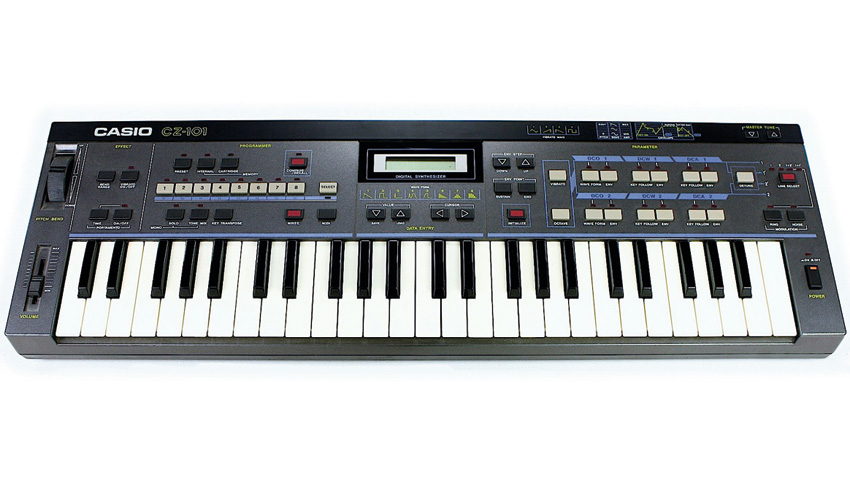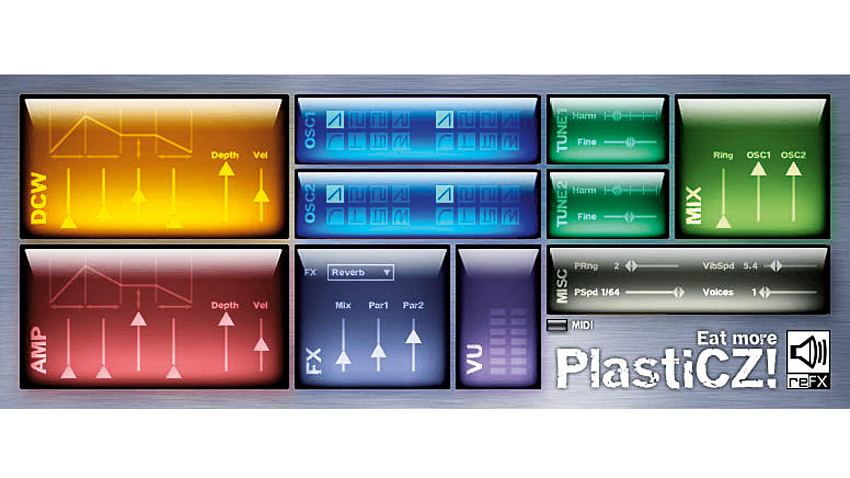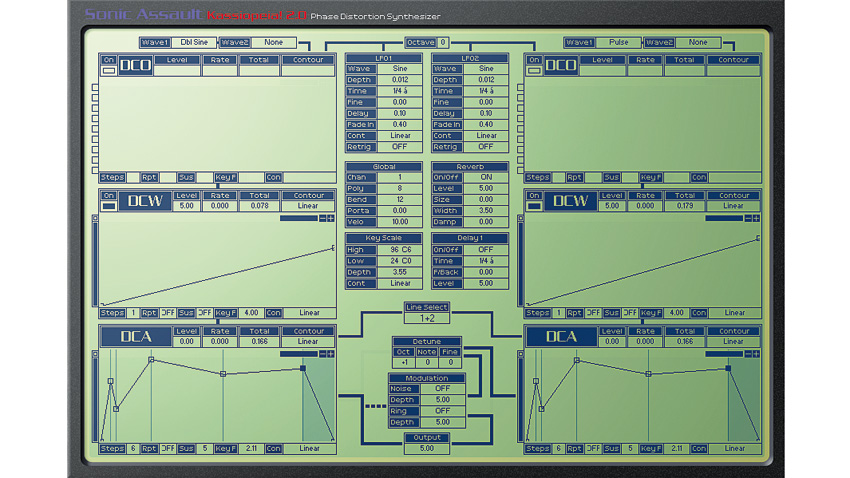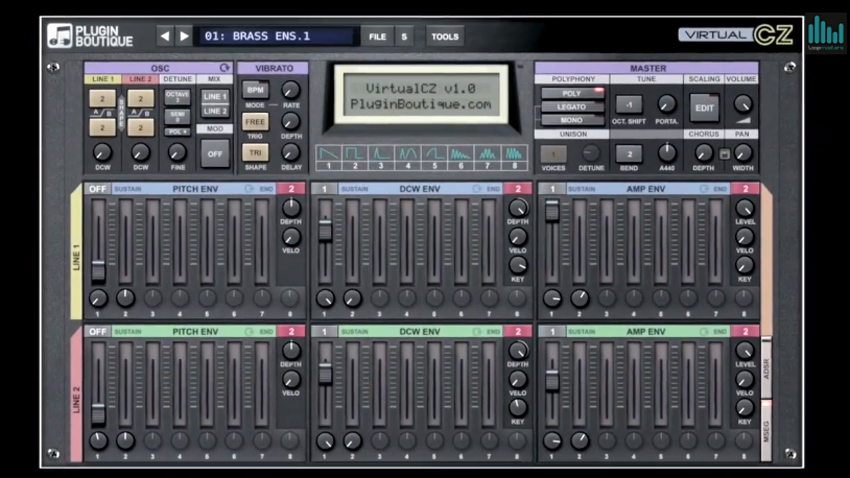Blast from the past: Casio CZ-101
Bone up on this cheap, deep and diminutive digital dynamo

Image courtesy of Perfect Circuit Audio
Until the early '80s, synthesizers were anything but cheap, and most of them were monotimbral, meaning that they could only play a single patch at a time. As difficult as it is to believe, cranky old analogue instruments were on their way out, supplanted by sleek MIDI-enabled ones with the word 'Digital' splattered boldly across their front panels. The genesis of this trend came in the form of Yamaha's ubiquitous FM synth, the DX7, the first such instrument to enjoy blockbuster sales figures.
Electronic gadget maker Casio had already produced some simple digital instruments, most obviously in the form of the tiny VL-Tone, a calculator-cum-keyboard offering a smattering of preset tones with a simple ADSR generator. By no means a pro instrument, it still found its way onto songs by The Fall and Trio. Yet it would be the company's CZ-101 that set the tills ringing.
Boom, 101
This compact synth sported tiny keys, battery power and guitar strap pegs. More importantly, the CZ-101 ushered in Casio's short-lived attempt to market professional electronic instruments.
Despite its cut-down size, the CZ-101 was exactly that: a professional-quality synthesiser that offered Casio's own take on digital synthesis, based on 'phase distortion' technology, which, while similar to Yamaha's FM (indeed, the DX7 used phase modulation under the hood anyway), was much, much easier to program.
The CZ's voice was generated by two DCOs, each of which could draw upon any of seven disparate waveforms that bore little resemblance to the saws, squares and sines of traditional analogue synthesis, even though the names were retained.
Phase distortion worked by modulating the phase of a waveform to generate a new wave shape. This was a decidedly digital machine: familiar filters were replaced by the Digitally Controlled Waveshaper (or DCW), a means by which the phase angle of the waveform could be altered by an eight-stage envelope. Cutoff and resonance were nowhere to be found, although similar effects could be achieved through clever programming.
Get the MusicRadar Newsletter
Want all the hottest music and gear news, reviews, deals, features and more, direct to your inbox? Sign up here.
Eight-stage envelopes controlled the DCOs and amplitude; the LFO had controls for depth/delay, but just four shapes and was vibrato-only.
The signal path was divided into "lines", each one consisting of a complete signal path of DCO, DCW and DCA. A unique brand of ring modulation was available for clangourous sounds - something of a CZ speciality.
Polyphonic spree
The CZ-101 offered a not-disrespectful (for the time) eight voices of polyphony. These could be spread across eight MIDI channels, each with its own patch. This was a big part of the instrument's appeal, as computer-based MIDI sequencing was just coming into fashion and the CZ-101 provided an affordable means to create multi-part arrangements.
Better still, it could be had for a quarter of the cost of a monotimbral DX7. As such, it sold like mad and spawned a short-lived line of professional synths and samplers from Casio before the bean counters decided that there wasn't enough money to be made from them. Fortunately, the CZ's crunchy, digital tones are easily replicated in software, with many good freeware options available.
Three great CZ-101 emulations

ReFX PlastiCZ
This cross-platform offering is sonically modelled on the CZ, even if the parameter set looks quite different. You get two 'phase-morph' oscillators with amplitude modulation thrown into the mix, and the DCW looks like a standard ADSR. Nevertheless, it can feed your need for the CZ's zaps, splats and spiky basses.
Find out more about ReFX PlastiCZ

Sonic Assault Kassiopeia!
The inclusion of phase distortion oscillators in SynthEdit means that Windows musicians get plenty of CZ action with Kassiopeia!. Dual-line phase distortion oscillators, graphical 16-stage envelopes, ring modulation and a GUI that looks like an old Atari CZ editor make this one a must have for Casiophiles.
Find out more about Sonic Assault Kassiopeia!

Plugin Boutique VirtualCZ, £60
The VirtualCZ plugin models the original synth's engine (it can actually load and transmit CZ SysEx patches) while also offering simpler editing controls, switchable envelope generators and Unison modes.
Find out more about Plugin Boutique VirtualCZ


Computer Music magazine is the world’s best selling publication dedicated solely to making great music with your Mac or PC computer. Each issue it brings its lucky readers the best in cutting-edge tutorials, need-to-know, expert software reviews and even all the tools you actually need to make great music today, courtesy of our legendary CM Plugin Suite.
“Excels at unique modulated timbres, atonal drones and microtonal sequences that reinvent themselves each time you dare to touch the synth”: Soma Laboratories Lyra-4 review
“I’m looking forward to breaking it in on stage”: Mustard will be headlining at Coachella tonight with a very exclusive Native Instruments Maschine MK3, and there’s custom yellow Kontrol S49 MIDI keyboard, too










